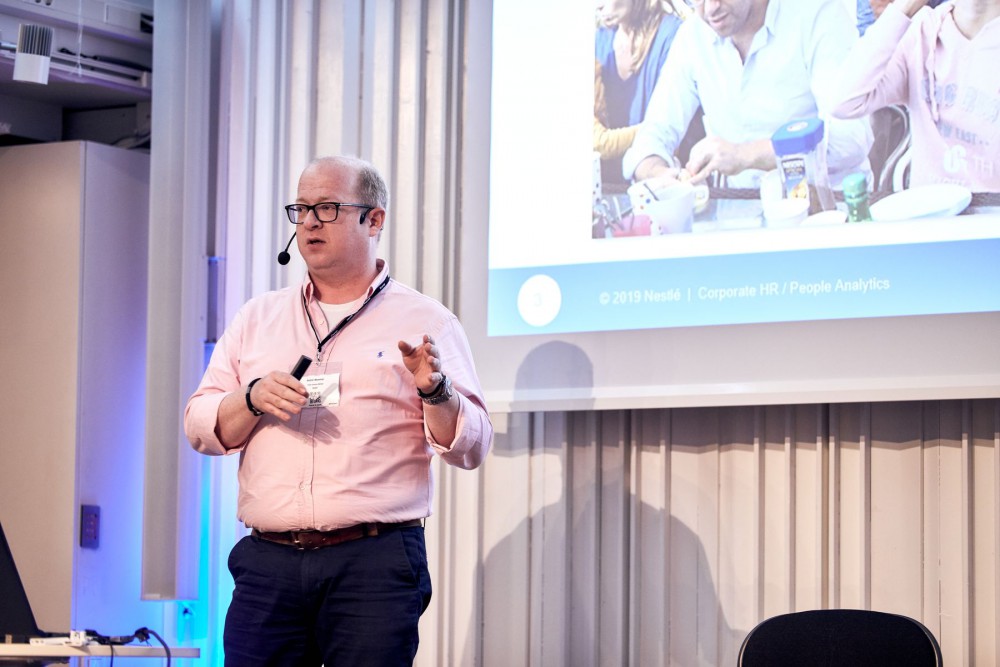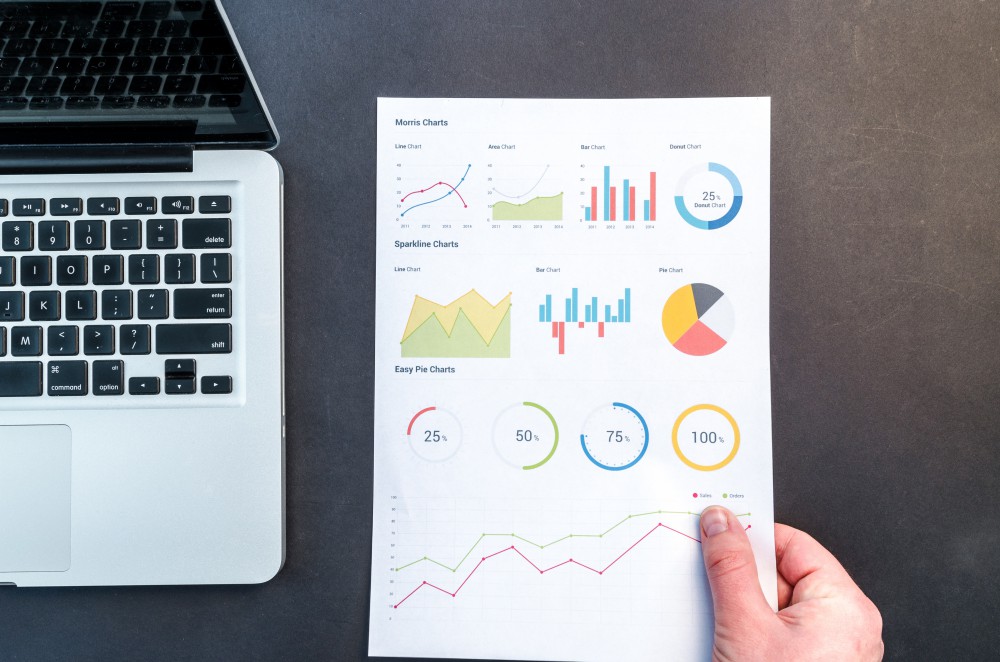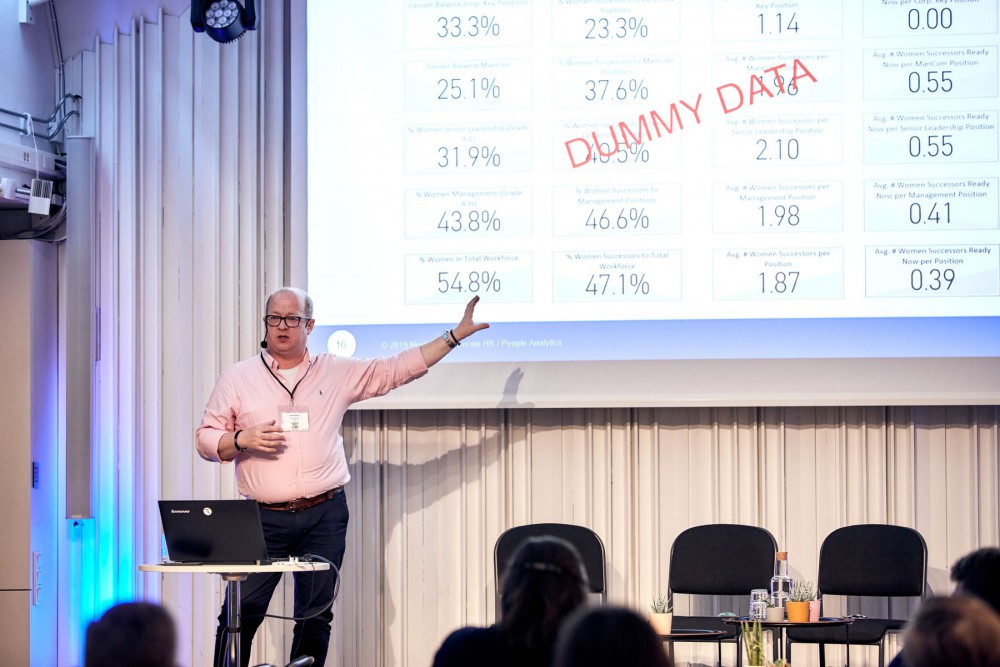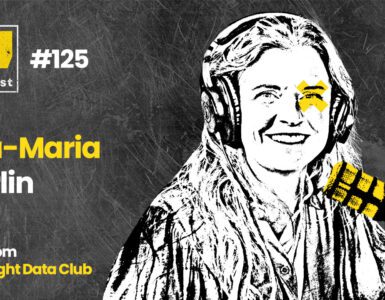The gender pay gap is still widely present in the digital era. It’s good news though that companies are working towards narrowing this gap. What’s even more, recent legislations are putting companies under pressure to reveal their pay gaps and start taking active measures. People analytics gives insight into talent stats that helps companies identify where they are falling short with equal workplace opportunities.
Nestlé, the world’s largest food and beverage company with over 2,000 brands, is a great example of how a global company should actively work on providing diversity and inclusion in the workplace through people analytics.
Nestlé – an advocate of gender equality in the workplace
André Bezemer, People Analytics Manager at Nestlé, took the stage to present Nestlé’s advocacy and initiatives for gender workplace equality through people analytics at the Nordic People Analytics Summit last year.
“If you ask our CEO [about gender equality], it’s very simple, it’s the right thing to do. Everybody deserves equal opportunity whether in the gender space, in LGBT space, etc,” states André. To support their beliefs, Nestlé has signed an ILO (International Labour Organization) Pledge that shows their commitment to equality, diversity and equal pay. Besides that, André that since last year, they’ve started monitoring gender pay and equal pay across the whole Group and beyond local legislation to make sure all gaps are identified and addressed.


But once all officialities are done and you have committed to paying man and women equal, you have to actually deliver. So Nestlé decided to look inwards and see whether they actually pay women and men the same, and if not how to amend that.
Equal pay vs. gender pay gap
Before André continues to explain Nestlé’s approach, he makes a clear distinction as to the meaning of the terms “equal pay” and “gender pay gap”. Gender pay gap refers to the average of all men in the company compared to the average of all women in it. Whereas equal pay means a man and a woman being paid the same for the same work.


Nestlé’s approach with people analytics for equal pay
As they are working across multiple markets, Nestlé established principles for people analytics that would be upheld by all division across the world:
- Standardised analytics
- Defining and populating a dataset to enable insight, actions and assessment
- Building capabilities across People Analytics
- Developing the tools to fit users’ needs
The tricky part with people analytics is that the analysis is done locally and problems arise when comparing two different markets, states André. Hence, they are focused on developing a local approach that they can compare between markets on a global level. The main objective is to discover if there are certain outliers in certain markets or if there are entire groups of the workforce with large pay differences that need to be addressed.
If you want to move the needle [in gender balance], you have to make sure that you have sufficient women identified to take senior roles.
As we mentioned previously, the gender pay gap is easy to calculate – it’s the difference between the average pay for men and the average pay for women. But calculating whether they pay equally men and women for the same work is a bit more complicated. Nestlé uses a standard model that takes into account several variables such as age, grade, function and talent rising, and then calculates whether all these correlate to gender with pay as an outcome.
What they discovered as an outcome is that females on average earn 1.013 times what males earn. The result is good, but the important thing is what they actually do with it and the subsequent actions they drive off that, emphasises André.


Closing the gap
If the inequality case refers to individual persons that for e.g. are lagging behind with salary, the issue is addressed relatively easily. But if a bigger part of the workforce is concerned, it requires a much more systematic and structural approach to fix the gap, André asserts, such as adjusting skill gap or policy that affects that particular workforce. Again the crucial thing is to get the insight that a gap exists and define an action plan within the market to start closing that pay gap.
Dashboards
As much as offering diversity and inclusion in the company, it’s that much more important to standardise how the insights are presented and make them easily accessible because as André points out. They discovered that a lot of people didn’t have access to the data or many misunderstandings had arisen when looking at data when a company operates across the whole planet, as Nestlé does. For example, attrition is not the same everywhere
So they discovered that there is an urgent need to standardise a comprehensive set of metrics:
- Headcount
- Attrition
- Hiring
- Talent
- Succession
One critical metric is succession, André explains, because in Nestlé the higher the company ladder you go, the rate of external hires decreases and the number of females gets more narrow, as is the case with most of the other companies. At a C-Suite level, their internal movement ratio is 94%, which André admits it’s not a great number because hiring externally is one way to increase the gender balance.
One solution to this is a succession plan based on insights on succession metrics so different divisions can devise a strategy on how to develop and prepare women for these roles.


The succession and other metrics are available in Nestlé’s Global D&I Dashboard, which is globally accessible to all stakeholders in the company. And it’s completely in accordance with GDPR and all individual data is protected.


Nestlé’s Global D&I Dashboard also provides them with insight into gender balance holders vs. successors, meaning the ratio of women in every level in the company vs. the ratio of women who are equipped with knowledge and skills to succeed to senior roles. “Because if you want to move the needle [in gender balance], you have to make sure that you have sufficient women identified to take those roles”, emphasises André. The dashboard data allows them to take concrete measures to address the gender gap and create a succession plan. In the case where a vacant job needs to be filled and there are no females on the list, or they are potential female candidates but they will be ready for the position in 3-5 or more years, they start driving the agenda to prepare them for succession on a more senior role. That also means preparing the executives for challenging conversations and openness to accept change. And the dashboard insights have been helpful for the people analytics department in these challenging conversations, concludes André.
















Add comment